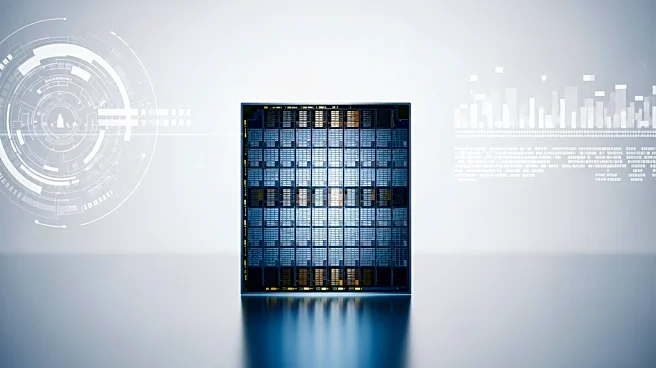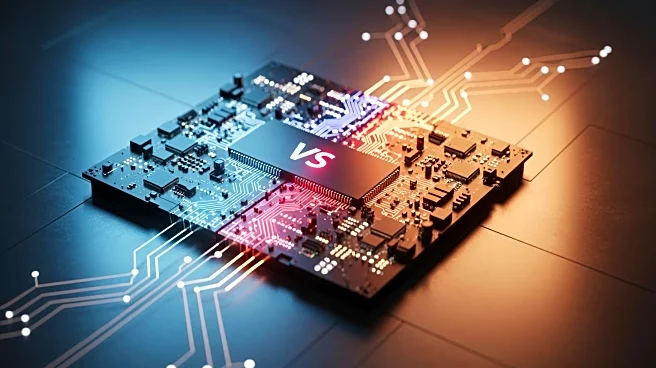What's Happening?
Researchers at the King Abdullah University of Science and Technology (KAUST) have set a new record in microchip design by achieving the first six-stack hybrid CMOS for large-area electronics. This breakthrough surpasses previous records of two stacks
and marks a significant advancement in integration density and efficiency. The development is crucial for electronic miniaturization, particularly in flexible electronics, smart health, and the Internet of Things. The KAUST process minimizes damage to the chip by keeping fabrication temperatures below 150°C, which is significantly lower than the several hundred degrees Celsius typically required, thus preserving the integrity of the chip's layers.
Why It's Important?
This advancement in microchip stacking is pivotal for the future of electronics, as it addresses the limitations of current design approaches that are reaching their quantum mechanical limits. By stacking transistors vertically, the KAUST team provides a solution to increase functional density without escalating costs. This could lead to more powerful and efficient electronic devices, benefiting industries focused on flexible electronics and smart health technologies. The ability to fabricate chips at lower temperatures also opens up new possibilities for manufacturing processes, potentially reducing costs and increasing the longevity of electronic components.
What's Next?
The KAUST team's breakthrough sets a new benchmark for microchip design, which could influence future research and development in the semiconductor industry. As the demand for more compact and efficient electronics grows, other institutions and companies may adopt similar approaches to enhance their products. This could lead to collaborations and innovations that further push the boundaries of electronic miniaturization and performance.
Beyond the Headlines
The ethical and environmental implications of this advancement are noteworthy. Lower fabrication temperatures could reduce energy consumption and the environmental impact of microchip production. Additionally, the increased efficiency and miniaturization of electronics could lead to more sustainable technology solutions, aligning with global efforts to reduce electronic waste and improve resource management.













